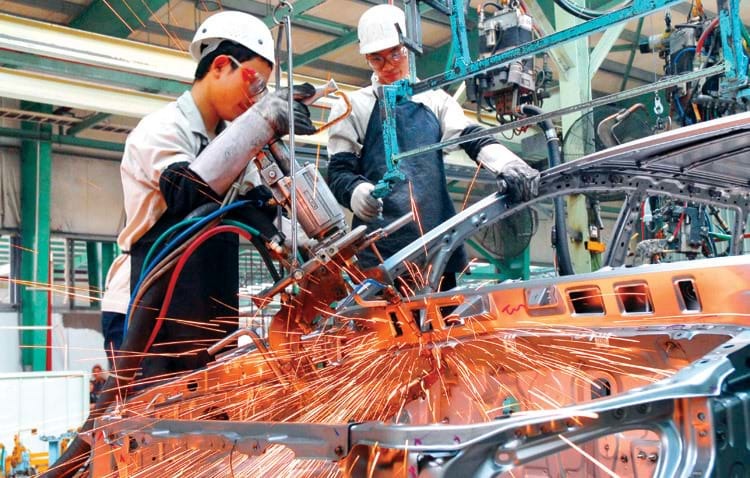The Ministry of Industry and Trade (MOIT) admitted that the automobile supporting industries are still underdeveloped with only a few domestic manufacturers able to join the supply chains.

The products of Vietnamese enterprises are labor-intensive spare parts, made with simple technology such as chairs, glasses, tires and wheels. The localization ratio of fewer-than-9-seat cars is just 10-20 percent.
According to the Vietnam Automobile Manufacturers’ Association (VAMA), 80 percent of car parts needed to make a car are imported.
If the localization of car parts is divided into 4 levels, from simple to complex, with the ratio of 20 - 20 - 20 – 40 percent, then the localization level of less-than-9-seat cars is a the first level, or 10-20 percent.
| The biggest problems of car part manufacturers in Vietnam are the small scale and reliance on import materials. This makes the production cost in Vietnam higher than other regional countries. |
The biggest problems of car part manufacturers in Vietnam are the small scale and reliance on import materials. This makes the production cost in Vietnam higher than other regional countries. The production cost of plastics and steel car parts in Vietnam is 2-3 times higher than other regional countries.
Toru Kinoshita, CEO of Toyota Vietnam, automobile manufacturers and suppliers need to have big output to feel encouraged to increase the localization ratio.
It is the big output which can help increase the localization ratio in the motorbike industry. The locally made content in motorbikes is very high, 70-90 percent. This is because the motorbike market has a large scale of 3 million products a year.
With the high market demand, investors have every reason to step up production in Vietnam and increase the localization ratio, thus creating a developed motorbike industry.
But things are different in the automobile industry. The total output of under-9-seat cars is just 250,000 products a year, while there are tens of car models.
The model with highest output churns out 27,000 products a year. In order to ensure effective production, each model needs to have the output of 50,000 products a year.
Meanwhile, there are many barriers that prevent an increase of output. As the import tariff has been cut to zero percent, imports from ASEAN have been flocking to Vietnam, which means the market has narrowed for domestic manufacturers.
Vietnam’s automobile market will be fully open by 2030. The import tariff on ASEAN imports has been cut to zero percent. In 2018, Vietnam signed CPTPP, committing to slash the import tariff gradually to zero percent in 7-9 years.
Most recently, Vietnam has signed EVFTA, committing to cut the tariff step by step to zero percent in 9-10 years.
MOIT estimates that the Vietnam’s automobile market would have a scale of 1 million cars after 2025.
Chi Mai

Automobile sales in Vietnam can set new record in 2019
Vietnam's automobile market is expected to set a new sales record this year with sales of the Vietnam Automobile Manufacturer Association (VAMA) members and TC Motors averaging nearly 32,000 cars each month in January-September.

HCM City automobile registration fee doubles
HCMC has approved a plan to raise registration fees for new automobiles and motorbikes to the highest level, with the fee for under-nine-seat cars being raised to VND20 million from VND11 million.
 If supporting industries cannot develop and automobile joint ventures continue importing car parts for assembly, Vietnam’s automobile industry will not survive after 2025, analysts say.
If supporting industries cannot develop and automobile joint ventures continue importing car parts for assembly, Vietnam’s automobile industry will not survive after 2025, analysts say.